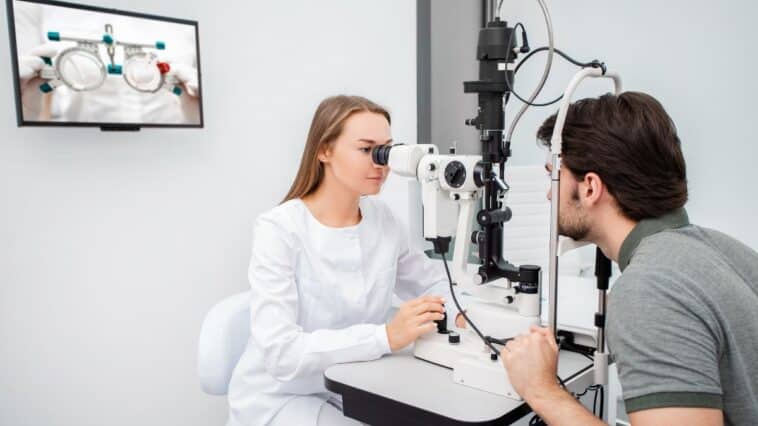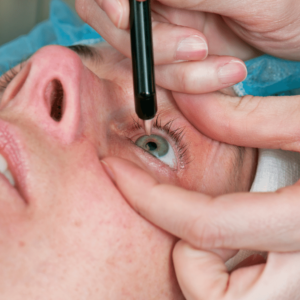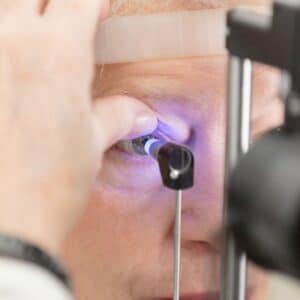Eye diseases are health conditions that affect the structure and function of the eye, causing visual impairment or vision loss. Some common examples include cataracts, glaucoma, macular degeneration, diabetic retinopathy, dry eye syndrome, conjunctivitis, corneal ulcer, age-related muscular degeneration, eyelid ptosis, strabismus, and many others.
Eye diseases can be caused by various factors, including genetics, infections, injuries, and systemic diseases like diabetes, as well as lifestyle factors such as smoking, diet, and exposure to UV radiation. Regular eye exams and prompt treatment are essential to preserving eye health and vision.
What Are the Common Eye Diseases?
Many different types of eye diseases can affect young and older people. Each of these conditions has its own unique set of symptoms and causes.
Some of the most common include:
- Cataracts: clouding of the lens in the eye.
- Glaucoma is damage to the optic nerve due to increased pressure in the eye.
- Macular Degeneration: deterioration of the central portion of the retina.
- Diabetic Retinopathy is damage to the retina’s blood vessels caused by diabetes.
- Dry Eye Syndrome: insufficient production of tears to lubricate the eye.
- Conjunctivitis: inflammation of the transparent membrane covering the white part of the eye and inside of the eyelids.
- Corneal Ulcer: an open sore on the clear outer layer of the eye.
- Age-related Muscular Degeneration (AMD): degeneration of the macula in people over 50.
- Eyelid Ptosis: drooping of the upper eyelid.
- Strabismus: misalignment of the eyes.
- Nystagmus: rapid involuntary movement of the eyes.
- Color Blindness: difficulty distinguishing certain colors.
- Retinal Detachment: separation of the retina from the inner layer of the eye.
- Presbyopia: loss of the ability to focus on close objects.
- Uveitis: inflammation of the middle layer of the eye.
- Keratitis: inflammation of the cornea.
- Optic Neuritis: inflammation of the optic nerve.
- Epiretinal Membrane: a thin layer of tissue that forms on the retina.
- Floaters: small moving specks that float across your field of vision.
- Photophobia: sensitivity to light.
- Double Vision: seeing two images of a single object.
- Eyestrain: fatigue of the eye muscles caused by prolonged use.
- Posterior Vitreous Detachment (PVD): separation of the vitreous gel from the retina.
- Chalazion: a small, painless bump that develops on the eyelid.
- Allergic Conjunctivitis: inflammation of the conjunctiva caused by an allergy.
What Are the Symptoms of Eye Diseases?
Common symptoms of eye diseases can include:
- Blurred or decreased vision
- Double vision
- Eye pain or discomfort
- Floaters or spots in the vision
- Sensitivity to light
- Redness or swelling of the eye or eyelid
- Dry eyes
- Itching or burning eyes
- A sudden loss of vision
- A change in the appearance of a mole or freckle around the eye
However, specific symptoms may vary depending on the type of eye disease. See an eye doctor if you experience unusual changes in your vision or health.
Diagnosis of Eye Diseases
The diagnosis of eye diseases typically involves a comprehensive eye examination that includes a detailed history of symptoms and medical conditions, visual acuity testing, eye movement and coordination assessment, examination of the internal and external structures of the eye, and examination of the optic nerve and retina.
The eye doctor may perform additional tests such as visual field testing, tonometry to measure the pressure inside the eye, or imaging studies such as optical coherence tomography or fundus photography.
Depending on the symptoms and findings, the doctor may also refer the patient to a specialist, such as an ophthalmologist or optometrist, for further evaluation and treatment.
How Can I Protect My Vision?
Here are some detailed ways to protect your vision:
- Regular comprehensive eye exams are crucial for detecting vision problems early and preserving good eye health. It is recommended that adults have an eye exam at least once every two years. People with certain risk factors, such as a family history of eye disease, may need more frequent exams.
- Wear protective eyewear: It’s essential to wear protective eyewear when engaging in activities that may put your eyes at risk of injury. Examples include playing sports or working with power tools and woodworking. When choosing protective eyewear, look for glasses or goggles made from polycarbonate lenses, as they provide optimal protection while maintaining durability.
- Wear sunglasses: It’s essential to protect your eyes from the sun’s harmful rays, so wear sunglasses! Look for lenses blocking 99-100% of UVA and UVB radiation to get the most protection. Wearing sunglasses is a must if you will be outside for extended periods.
- Maintain a healthy diet: Eating a healthy diet is essential for optimal eye health. Incorporate fruits and vegetables high in vitamins A, C, and E – like spinach, kale, carrots, apples, and blueberries – into your regular meals. Also, regularly incorporate fatty fish with omega-3 fatty acids, such as salmon, for added eye protection.
- Exercise regularly: Regular exercise can improve blood flow to the eyes, providing them with the oxygen and nutrients they need to function correctly.
- Quit smoking: If you want to protect your eyes from damage, one of the best things you can do is quit smoking. Smoking has been linked to an increased risk of conditions such as macular degeneration and cataracts, but quitting this habit can dramatically help reduce the likelihood of developing these diseases.
- Monitor your diabetes: People with diabetes are at increased risk for eye diseases like diabetic retinopathy. Monitoring your diabetes and receiving regular eye exams can help prevent vision loss.
- Control high blood pressure: High blood pressure can severely impact your vision, leading to severe conditions like hypertensive retinopathy. Therefore, controlling your high blood pressure through medication and lifestyle changes is the best way to protect your vision. Eating a healthy diet, exercising regularly, and limiting alcohol intake can help keep your blood pressure in check.
- Limit screen time: Spending long hours in front of a screen can lead to eye strain and fatigue. Take regular breaks and try to maintain a comfortable distance from your screen.
- Get enough sleep: To ensure your eyes stay healthy, you need to get enough restful sleep. Aim for at least 7-8 hours a night. If you don’t, your vision can become strained and exhausted. Make sure to do whatever it takes to get that much-needed rest each night!
When to See an Eye Doctor
See an eye doctor or ophthalmologist if you experience any changes or symptoms related to your eyes. Some common symptoms that warrant a visit to the eye doctor include:
- Blurred or double vision
- Loss of vision or partial vision loss
- Pain or pressure in the eyes
- Seeing floaters or flashes of light
- Changes in the color or size of the iris
- Eye redness or swelling
- Difficulty seeing at night or in low light
- Dry, itchy, or watery eyes
- Unequal pupils
- A sudden appearance of a halo around the lights
- A change in the way you see colors
- A persistent headache with eye pain
- A sudden increase in the number of floaters
- A sudden decrease in vision
In addition to these symptoms, it is recommended to have routine eye exams, even if you do not experience any symptoms, to maintain good eye health and catch any potential issues early. Eye exams can help detect eye diseases such as glaucoma, macular degeneration, cataracts, and diabetic retinopathy.
If you have a family history of eye diseases, it is essential to have regular eye exams to check for early signs of the condition. If you wear contacts or glasses, it is also essential to have regular eye exams to monitor changes in your vision and update your prescription.
Conclusion
Eye diseases can range from minor conditions such as dry eyes to more severe issues such as glaucoma and age-related macular degeneration. Regular eye exams and prompt treatment can help maintain good eye health and potentially prevent vision loss.
It’s essential to be aware of the symptoms of eye diseases and see an eye doctor promptly if you experience any unusual changes in your vision or eye health. Taking steps to protect your eyes, such as wearing sunglasses and a hat outdoors, can also help prevent eye damage.






